Common name(s): mistletoe, common mistletoe, European mistletoe, European white-berry mistletoe
Scientific name: Viscum album
Family: Santalaceae
Origin: native
Flowering season: evergreen
Habitat: canopies of broadleaf trees, orchards
Romantic, parasitic and poisonous, mistletoe loves broadleaf trees and provides an important habitat for woodland wildlife. Its leathery green leaves offer welcome colour among bare winter branches when much else is dormant.
Common name(s): mistletoe, common mistletoe, European mistletoe, European white-berry mistletoe
Scientific name: Viscum album
Family: Santalaceae
Origin: native
Flowering season: evergreen
Habitat: canopies of broadleaf trees, orchards
Mistletoe is a small semi-parasitic evergreen shrub which forms large spherical balls up to 1m wide in the tops of trees. Mistletoe leaves, stems and berries are all poisonous.
Leaves: oval, evergreen leaves which grow in pairs.
Flowers: its small, white flowers are made up of four tiny petals and form in clusters of three to five. Mistletoe is dioecious meaning male and female flowers are produced on separate plants.
Fruit: a waxy, white berry which grows in clusters of two to six. The seeds inside are coated in a sticky substance which sticks to the beaks of birds feeding on the fruit.
They either wipe the substance off on a branch, or eat it and excrete it on trees in their droppings. The gluey pulp around the seed hardens and fastens the seed in place. As the new mistletoe plant grows, the roots penetrate the bark and start to take water and nutrients from the tree.
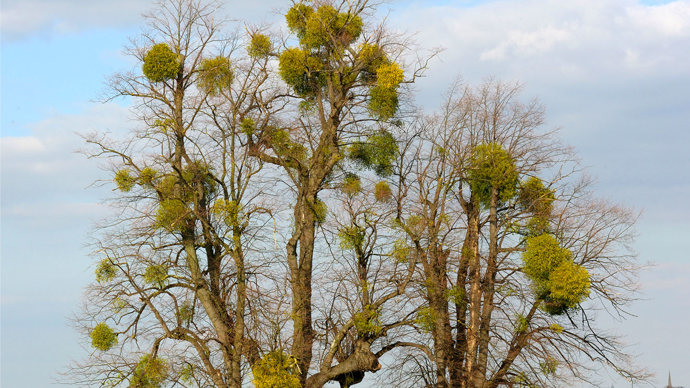
Credit: Radnorimages / Alamy Stock Photo
Find mistletoe in the south and the West Midlands in England.
Look for it in the canopy of trees; it is commonly found in apple, lime and poplar but has also been recorded on blackthorn, hawthorn, rowan and willow. Mistletoe can produce some of its own food via photosynthesis but takes minerals and water from the host tree.
The mistletoe’s leaves are green all year round, but are more visible in the winter once the other trees have lost their leaves. The white berries appear from around October until May.
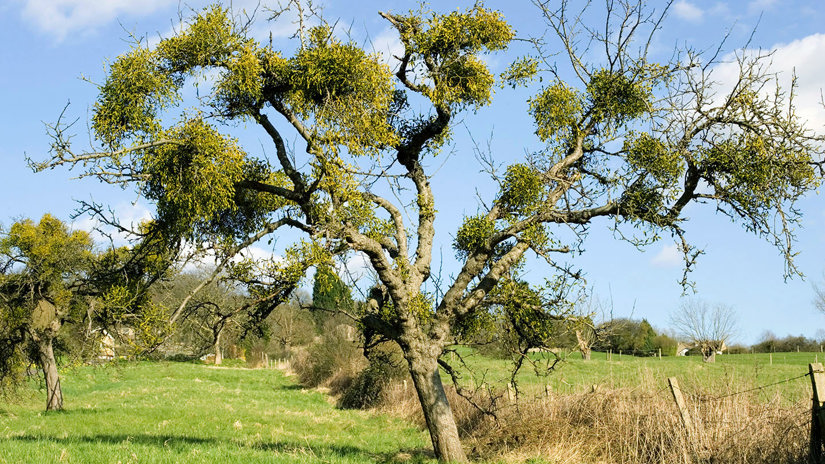
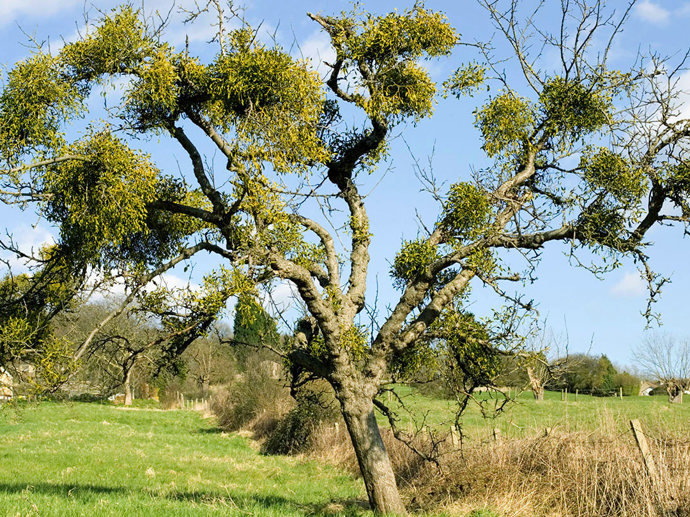
Hanako Shimada • 23 Dec 2024
Mistletoe is a familiar Christmas staple, associated with folklore and midwinter tradition. But where does it grow and how can you find it in the wild?
White berries don’t tend to be sought out by birds as they usually prefer berries in brighter colours. However, some will eat white berries and they are an important winter food source for birds such as the mistle thrush. For winter visitors like redwings and fieldfares, they are a welcome resource.
Six species of insect are specialist mistletoe feeders, including the rare mistletoe marble moth (Celypha woodiana) and mistletoe weevil (Ixapion variegatum).
Kissing under the mistletoe comes with rules: a berry has to be removed for every kiss claimed.
In Greek mythology, heroes were granted passage to the underworld with mistletoe. For Druidic societies, the plant was believed to give protection against evil and act as a cure for disease, and right through to the Middle Ages it had an association with fertility and vitality. Pagan societies thought it represented the divine male essence.
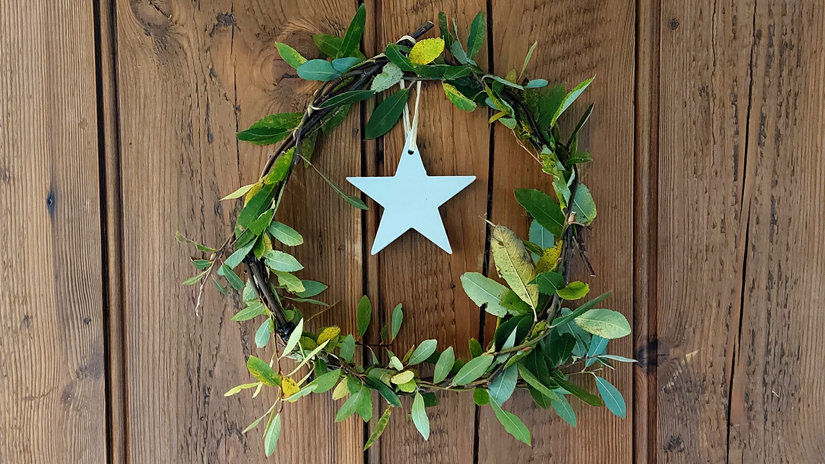
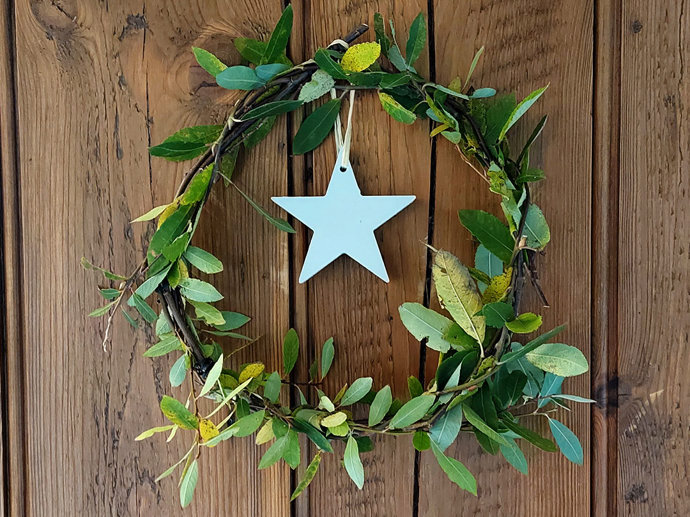
Helen Keating • 05 Dec 2022
Transform your home into a woodland wonderland this Christmas with our easy ideas for festive, foraged home decor.
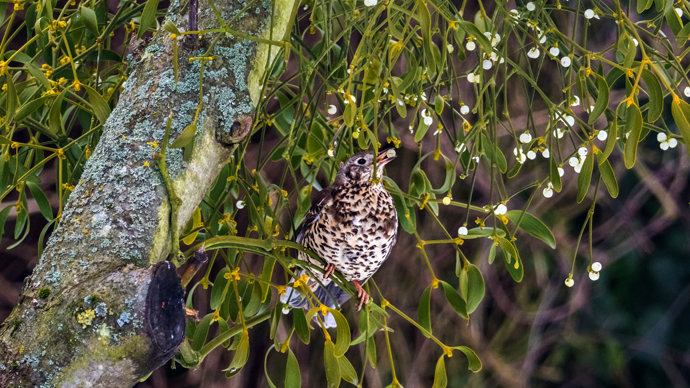
Credit: Gary K. Smith / Naturepl.com
Mistletoe is not under threat but has been declining across the UK, so the loss of traditional orchards where it once thrived is a concern.
Trees with large infestations of mistletoe can be negatively affected.
Although mistletoe may be nice as a Christmas decoration, it also offers excellent food and habitat for many creatures, so it’s best to enjoy it in its natural setting.